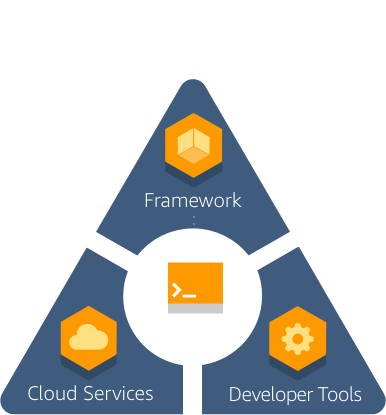Case Study: Ambra Health Uses AWS to Drive Global Expansion of Medical Imaging Platform

Ambra Health Uses AWS to Drive Global Expansion of Medical Imaging Platform
Growth is Ambra Health’s hallmark. Since its founding, the medical data and image-management software-as-a-service (SaaS) provider has grown to manage more than five billion medical images. Today, more than 425 hospitals, medical groups, imaging centers, and health information exchanges in North America use the Ambra Health platform to improve day-to-day workflows, store medical image, and speed up the delivery of patient care.
In recent years, Ambra Health set its sights on international expansion. Making that expansion a reality, however, was a major challenge because Ambra’s data centers are all in the United States. “We wanted to accommodate prospective customers in Canada, Europe, and Japan, but we didn’t have a fast or cost-effective way to get them up and running,” says Andrew Duckworth, vice president of business development for Ambra Health. “We didn’t want to have to build our own data centers globally and hire local teams to manage them.” The organization also had to consider the stringent data-protection requirements of some of the countries to which it wanted to expand. “Medical imaging data often has to be stored within the country or province that is acquiring the data,” Duckworth says. “We decided the AWS Cloud would be the best technology to meet our needs.”
"Using AWS, we can easily scale our medical-image management platform to meet the needs of healthcare customers worldwide. It was very easy to deploy and be operational globally."
Andrew Duckworth, Vice President of Business Development, Ambra Health
- About Ambra Health
- Benefits of AWS
- AWS Services Used
- Ambra Health, headquartered in New York City, is a software company that offers solutions for the managing and sharing of medical images and data between patients, physicians, and facilities. Ambra provides VNA, PACS, and image exchange solutions for healthcare customers across the globe.
Running a Global Platform on AWS
Ambra Health considered different cloud technologies before selecting Amazon Web Services (AWS). “With AWS, we felt the technology, brand recognition, and credibility would appeal to a broad range of international customers,” says Duckworth. “Additionally, AWS has comprehensive security and compliance certifications, which is critical for meeting medical imaging data requirements.”
Ambra Health has enabled its cloud-based vendor-neutral archive (VNA) platform—which stores medical images in both DICOM and non-DICOM formats from a range of imaging equipment in a single location—to run in the AWS Cloud. The company also now makes its SaaS picture archiving and communication system (PACS) platform available on the AWS Cloud for international customers.
The company runs both platforms on hundreds of Amazon Elastic Compute Cloud (Amazon EC2) instances and relies on Amazon Elastic Block Store(Amazon EBS) for persistent block storage volumes used with Amazon EC2 instances. Ambra Health also uses Amazon S3 Glacier for long-term storage of archived medical image data.
Using its AWS architecture, Ambra Health was able to replicate its on-premises U.S. disaster-recovery environment and easily scale it to fulfill the needs of its global customer base and drive current and future growth.
Fueling Global Expansion
By taking advantage of the scalability and global reach of AWS, Ambra Health was able to replicate its on-premises infrastructure on AWS and expand the VNA platform to new customers in Japan, Singapore, Germany, and Canada. “Using AWS, we can easily scale our medical image management platform to meet the needs of healthcare customers worldwide. It was very easy to deploy and be operational globally,” says Duckworth. “We didn’t have to put a lot of resources into building new data centers and training people to manage them.”
For example, MC Healthcare, one of the largest healthcare distributors in Japan, resells the Ambra Health platform to hospitals across Japan and now stores its medical images on AWS. “Previously, we wondered how we could possibly meet the growing imaging data needs of a large organization like MC Healthcare. Using AWS, that is no longer an issue,” says Duckworth.
Achieving Strict Data Protection
Ambra Health can meet its customers’ regional data privacy and protection needs by leveraging the global capabilities of AWS, such as the AWS Asia Pacific (Tokyo) Region and AWS security capabilities, to support the Ambra Health platform and keep customer data entirely within the country. “Security and compliance are the primary requirements for our customers when it comes to medical imaging data,” says Duckworth. “We can accomplish those goals by relying on the global reach of AWS and its strong compliance certifications. For example, all the imaging data managed in our platform by our customers in Japan must be stored in that country. We know we can meet that requirement by using AWS.”
Based on the success of its global expansion facilitated by AWS, Ambra recently started using AWS for expansion within the U.S. “We felt very confident, after our global expansion on AWS, that we could do the same for new domestic customers, especially those that requested we merge our platform into their existing AWS environments,” Duckworth says.
Ambra Health will continue to expand its capabilities by using technologies such as Amazon SageMaker to support new artificial intelligence (AI) and machine learning (ML) capabilities. The company is also exploring the use of AWS AI and ML to automate the process of de-identifying Protected Health Information tags and anonymizing radiology reports. Duckworth concludes, “As we continue focusing on growing the business both globally and domestically, we know we can rely on the best-in-class scalability and security capabilities that AWS provides.”













